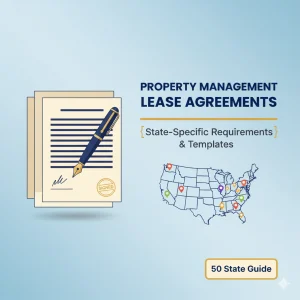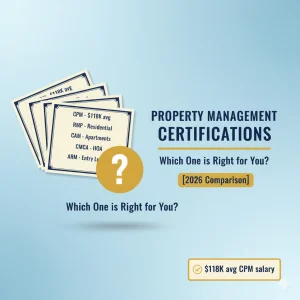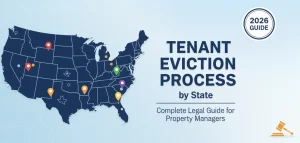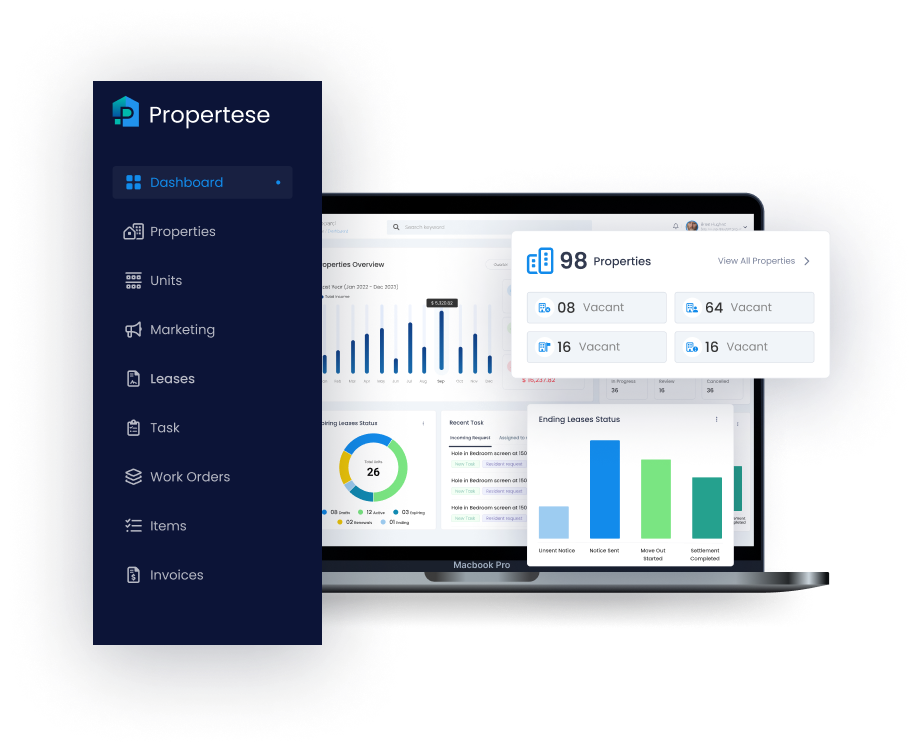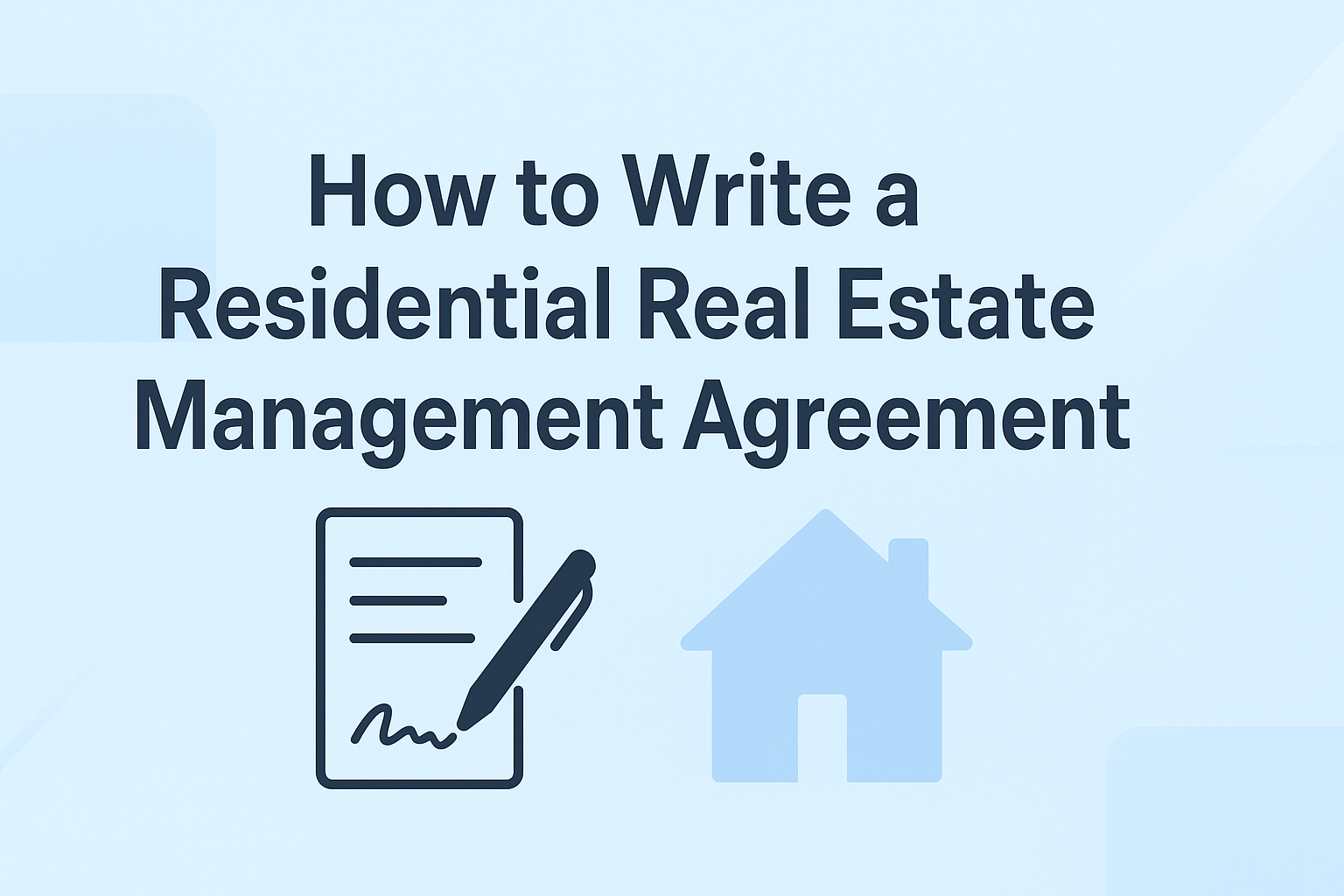
If you’re a property manager, you’ve probably felt that uneasy moment before signing a new client. Your mind keeps asking you questions like “What if the owner expects more than what’s in the agreement?” or “What if maintenance approvals become a nightmare?” That’s precisely why you need to learn how to write a well-drafted residential real estate management agreement. It’s your safety net, your rulebook, and your best defense against disputes.
If you continue reading, you’ll learn how to write a residential real estate management agreement step by step. So let’s get started.
What Is a Residential Real Estate Management Agreement?
A residential property management agreement is a legal contract between a property owner (client) and a property manager (service provider). It establishes the boundary of services, duties, payment, and regulations for how the manager executes daily operations, finances, and tenant relations. You can say it is the “terms of engagement” as it shields both parties while also providing clarity.
Why Every Property Manager Needs a Strong Agreement
A weak or inaccurate contract can result in:
- Unclear maintenance responsibilities
- Payment disputes
- Liability risks
- Poor owner–manager communication
Whereas a comprehensive and fair agreement:
- Establishes trust and professionalism
- Minimizes legal liability
- Defines expectations early on
- Simplifies operations and approvals
If you’re setting up your property management business, our guide on essential steps for starting a property management company breaks down the foundation you need before drafting agreements.
Step-by-Step: How to Write a Residential Property Management Agreement
Let’s divide this into practical steps you can use, whether you’re updating your current template or writing one from scratch.
1. Start with the Basics
Begin with:
- Full legal names of the property owner(s) and management company
- Contact details of both parties
- Description of the property (address, type, units)
Example:
“This agreement is entered into by Sunrise Property Management LLC (“Manager”) and John D. Thompson (“Owner”) regarding the residential property at 1234 Maple Avenue, Austin, Texas 78701.”
This section establishes the legal basis. Double-check entity names to avoid future litigation.
2. Define the Scope of Services Clearly
List all tasks the manager is entitled (and not entitled) to do.
Typical inclusions:
- Rent collection and tenant communication
- Marketing vacant units
- Screening and leasing tenants
- Coordinating maintenance and repairs
- Financial reporting and accounting
- Evictions and legal notices (if applicable)
Example:
“Manager shall be responsible for advertising vacancies, screening tenants, collecting rent, coordinating routine repairs, and managing vendor relationships. Manager shall not undertake structural modifications or capital improvements without Owner’s prior written approval.”
Tip:
The clearer the scope, the easier it is to justify your management fees later.
You can also explore how automation simplifies these tasks in Enhancing Property Management Efficiency with Propertese.
3. Specify Management Fees and Compensation Structure
This section establishes how you are paid.
Common fee structures:
- Percentage of monthly rent: 8–12% for residential
- Flat monthly fee: Usually for small portfolios
- Leasing fee: Generally, half or the whole month’s rent for new tenants
- Maintenance markup: 10–15% on vendor invoices
Example:
Owner shall pay Manager a monthly management fee of 10% of gross rent received. Other fees are a one-time leasing fee of 50% of one month’s rent and a 10% markup on maintenance work.”
4. Clarify Owner’s Responsibilities
This avoids depending too much on the manager.
Owners typically deal with:
- Property insurance
- Major capital repairs
- HOA fees or taxes
- Legal compliance (like lead paint disclosure, state registration)
Example:
“Owner shall keep adequate property insurance, service all mortgage charges and property taxes, and abide by laws governing housing. Manager shall not be responsible for Owner’s default in any of these obligations.”
For guidance on compliance, see Navigating the Real Estate Landscape: Legal and Operational Requirements for Property Management Startups.
5. Detail Financial Management and Record-Keeping
This is a high-risk category if not dealt with in a transparent manner.
Include:
- Rent collection method
- Security deposit handling
- Owner disbursements (timing and process)
- Monthly reporting schedule
Example:
“Manager shall keep accurate financial records and submit monthly income and expense reports to Owner on or before the 10th of each month. All rental proceeds must be deposited into an escrow or trust account before owner disbursement.”
If you want to organize your books efficiently, check out Organizing Your Finances: Setting Up the Ideal Property Management Chart of Accounts.
6. Include Maintenance and Vendor Management Policies
Define who approves what:
- Minor repairs under a specific limit (e.g., $300) can be auto-approved.
- Anything beyond that needs written approval.
Example:
“The manager can authorize approval of repairs up to $300 without prior approval. For repairs over $300, Manager shall obtain Owner’s written permission unless the repair is considered an emergency that impacts habitability or safety.”
Tip: Emergency definition clarity prevents billing conflicts later.
Learn more about cost control in Proven Ways for Property Managers to Lower Maintenance Expenses.
7. Define the Term and Renewal Conditions
Determine for how long the agreement holds and how it will renew.
Example:
“This agreement shall take effect on January 1, 2025, and shall continue for a term of one (1) year. It shall renew automatically for successive terms of one year unless either party gives notice of termination in writing at least 30 days before expiration.”
Tip: Use calendar reminders to track renewal dates. It’s a basic but effective retention strategy.
8. Add a Termination Clause
Termination is where many legal disputes arise.
Include:
- Notice period required (30 or 60 days)
- Outstanding early termination charges (if any)
- Obligations upon termination (final report, key handover)
Example:
“Either party may cancel this agreement with 30 days’ written notice. In the case of premature termination by Owner without reason, Manager shall be compensated one month’s management fee.”
9. Liability, Indemnification, and Insurance
This safeguards you against lawsuits or damages that are beyond your control.
Example:
“Manager will not be responsible for any loss, damage, or injury to property or persons due to causes outside the control of Manager. Owner will indemnify and hold Manager harmless against all claims except those due to gross negligence or willful misconduct.”
For a deeper dive into risk management, read The Cornerstone of Credibility: Best Practices for Managing a Property Management Trust Account.
10. Legal Compliance and Fair Housing
Add a clause to confirm compliance with:
- Federal Fair Housing Act
- State and local landlord-tenant laws
- Anti-discrimination policies
Example:
“Manager agrees to manage the property in complete compliance with federal, state, and local law, including the Fair Housing Act. Manager will not discriminate based on race, color, religion, sex, handicap, familial status, or national origin.”
Learn more about ethics and compliance in Key Principles of Exceptional Customer Service in Property Management.
11. Communication and Reporting
Miscommunication ranks #1 as a source of conflict between managers and owners.
Set expectations early:
- Preferred communication channels (email, portal, phone)
- Frequency of updates
- Reporting format
Example:
“Manager shall submit monthly performance reports and answer Owner questions within two business days. The parties agree to have professional communications via specified email addresses.”
Explore how tech simplifies communication in Smart Solutions for Efficient Tenant Communication in Real Estate Management.
12. Handling Tenant Disputes and Evictions
Outline how you’ll handle rent arrears, late fees, and evictions.
Example:
“Manager shall enforce lease terms, including late fee collection and eviction proceedings, in compliance with state laws. Manager is authorized to initiate eviction actions after providing notice to Owner.”
For marketing-related tenant issues, see Maximizing Occupancy Rates: The Power of Effective Property Management Advertising.
13. Technology and Record Access
Modern agreements include digital record-keeping.
Example:
“All records, invoices, and communications shall be maintained in the Manager’s cloud-based management system and accessible to the Owner upon request.”
Learn how AI improves this process in How Generative AI Is Helpful for Property Management Software.
14. Signatures and Execution
Always get both parties’ signatures and the date of execution. E-signatures (such as DocuSign) are now legally binding in all 50 states.
See how automation helps in 5 Ways Propertese DocuSign Integration Improves Lease Signing Compliance.
FAQs
Q1: How long should a property management agreement be?
The majority of agreements are 8–12 pages, but what’s important is that it’s clear, not lengthy.
Q2: Is it possible to use the same agreement for multifamily and single-family residences?
You can, but add property-specific terms for maintenance, insurance, and tenant communication.
Q3: Do I need to add performance guarantees?
Only if you can quantify them specifically (e.g., vacancy rate less than 5%), otherwise, use service-level expectations.
Bonus Tip: Keep It Review-Friendly
Review your agreement at least annually. Laws, technology, and service expectations change.
You can also utilize newer software such as Propertese to archive agreements, monitor renewal dates, and include digital signatures to make the process error-prone and easier.
Final Thoughts
A solid residential real estate management contract is your business backbone. It establishes trust, professionalism, and long-term relationships with customers. If you’re ready to centralize how you administer client contracts, accounting, and communication, learn how Propertese assists property managers to make documentation easy, automate rent monitoring, and manage portfolios more wisely, all from one platform.
Table of Contents
Stay Updated
Subscribe to get the latest news, industry trends, blog posts, and updates...

